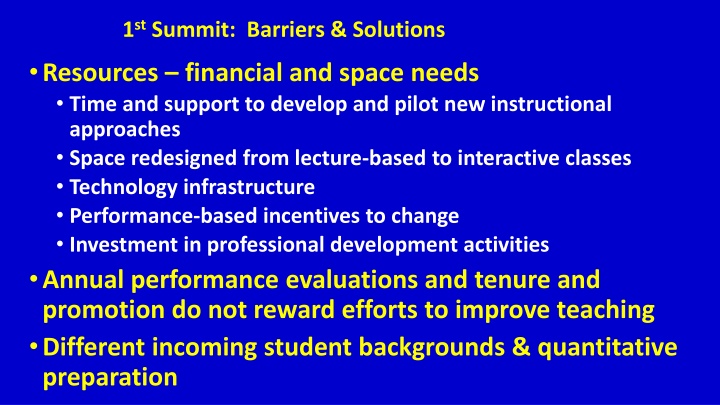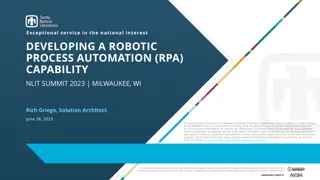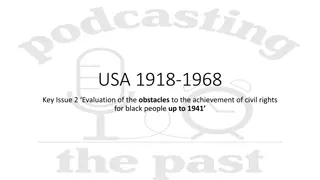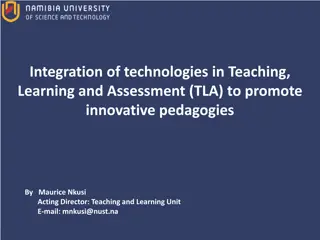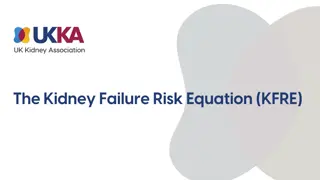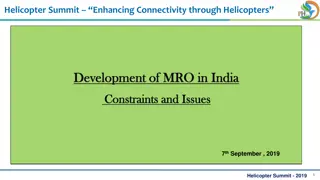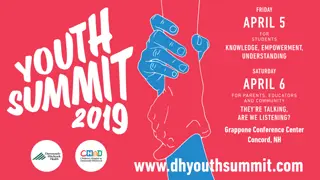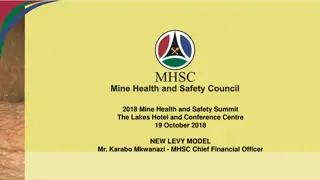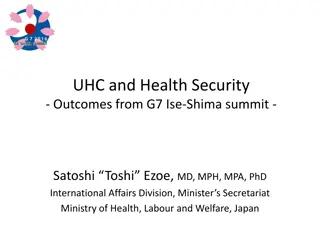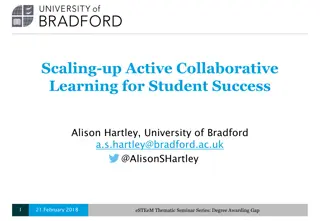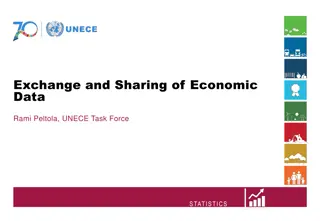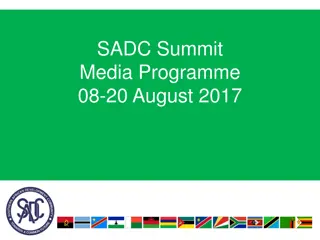Addressing Summit's Obstacles to Implementing Research-Validated Pedagogies
Summit participants face barriers such as financial needs, lack of incentives, and diverse student backgrounds in implementing effective teaching approaches. They also encounter roadblocks like resistant faculty and time constraints. Strategies like curriculum redesign and faculty involvement are proposed to overcome these challenges.
Uploaded on Feb 22, 2025 | 0 Views
Download Presentation

Please find below an Image/Link to download the presentation.
The content on the website is provided AS IS for your information and personal use only. It may not be sold, licensed, or shared on other websites without obtaining consent from the author.If you encounter any issues during the download, it is possible that the publisher has removed the file from their server.
You are allowed to download the files provided on this website for personal or commercial use, subject to the condition that they are used lawfully. All files are the property of their respective owners.
The content on the website is provided AS IS for your information and personal use only. It may not be sold, licensed, or shared on other websites without obtaining consent from the author.
E N D
Presentation Transcript
1stSummit: Barriers & Solutions Resources financial and space needs Time and support to develop and pilot new instructional approaches Space redesigned from lecture-based to interactive classes Technology infrastructure Performance-based incentives to change Investment in professional development activities Annual performance evaluations and tenure and promotion do not reward efforts to improve teaching Different incoming student backgrounds & quantitative preparation
Obstacles/barriers identified by Summit to implementing research-validated pedagogies and uses of technology
Obstacles/barriers identified by Summit to implementing research-validated pedagogies and uses of technology
Proposed Incentives Out of 354 departments
2016 Summit Progress Reports: 37 out of 92 2016 Summit Progress Reports: 37 out of 92 Accomplishments: 26 Curriculum Redesign 13 pedagogy 9 2YC 4YC 6 recruit/diversity 11 add or change majors 10 add new courses 13 other Future Plans: 20 Curriculum Redesign 7 pedagogy 6 2YC 4YC 2 recruit/diversity 12 other Highly dependent on type of institution i.e. R1 focused on curriculum; 2YC on pedagogy
Implementation Strategies 6 Matrix redesign: 4 success, 1 partial, 1 unsuccessful 12 Total Faculty involvement: 6 success, 6 partial 5 Core Group involvement, 4 success, 1 partial 5 Retreats planned, 1 completed 3 allowing enough time for process to work 12 other Highly dependent on size of faculty
Roadblocks: 6 insurmountable (faculty or admin meltdowns) 3 resistant faculty 7 lack of faculty buy in 3 lack of funding 8 upper administration constraints 8 lack of time 6 other
Common Advice Patience, patience, patience process takes time. Take it slow and spend the time to get faculty buy-in. Be patient, but insistent that changes can improve our offerings and be beneficial to our students and to our program. In times of budget problems, these kinds of changes can be program savers. Use the concepts and skills matrix to your advantage, as an instrument that was nationally vetted by geoscience faculty and employers. Open dialogue and communication is key. SERC pages on retreat planning and Backward Curriculum Design very helpful Large faculty use core group but get faculty buy-in first and keep updated Make sure that there is some mechanisms in place for driving and enforcing your proposed changes. Don t downplay administration or curricular demands at faculty meetings. Leverage institutional processes Before you start, figure out how to overcome entrenched ideas regarding what constitutes a real BS degree in geology; NAGT traveling workshops can help Keep what to teach separate from how to teach
2016 Summit Chairs 2016 Summit Chairs Kenneth Rubin Jeffrey Snyder Jennifer Roberts Michael Guidry Shemin Ge Wendy Calvin David Sparks
